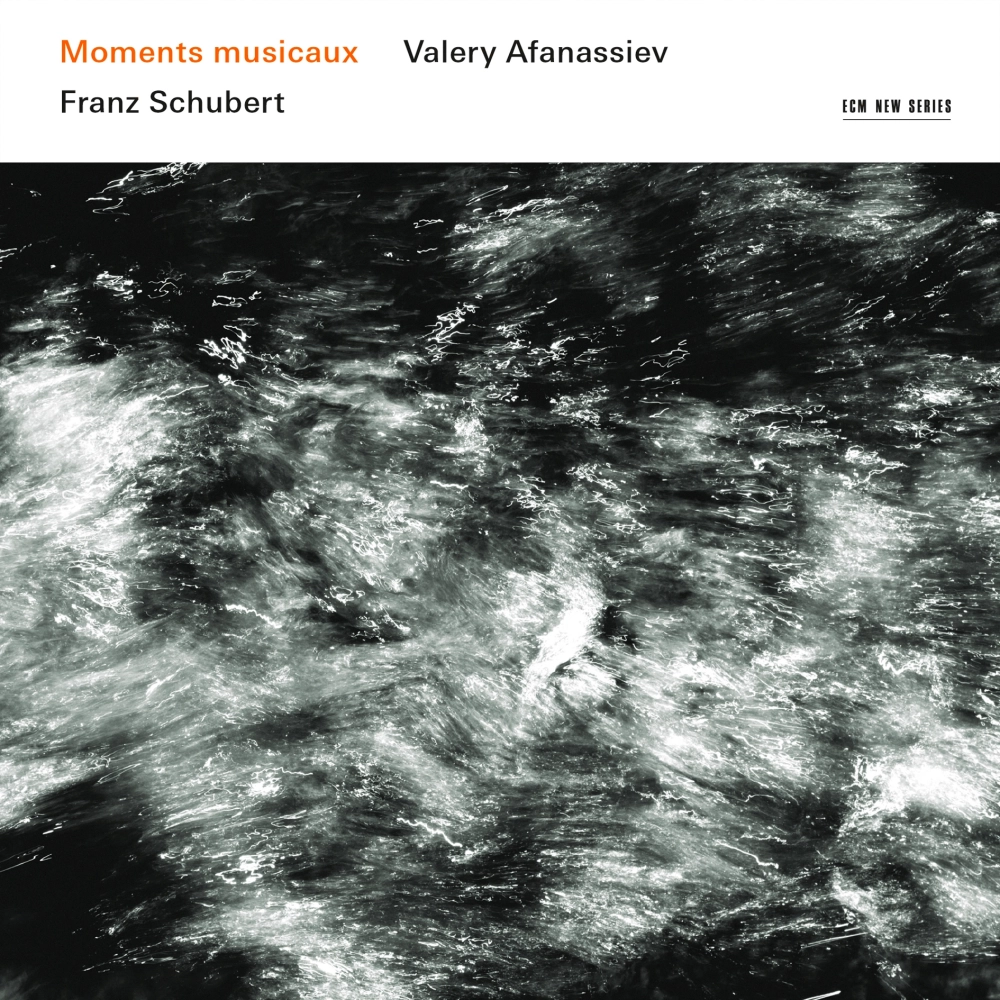Pianist Valery Afanassiev – renowned for his strikingly individual and deeply introspective interpretations of the music of Franz Schubert – has paired two often extrovert works by the composer: the set of six Moments Musicaux and the Sonata D. 850. Recorded in September 2010 at the Auditorio Radiotelevisione Svizzera, Lugano, this is ECM’s second Schubert recording by the Moscow-born pianist, having previously released a live recording of Afanassiev performing Schubert’s final Sonata D. 960 at the 1986 Lockenhaus Festival that has become a connoisseur’s favourite. Composed from 1823 to 1827, the year before the composer’s premature death, the Moments Musicaux brim with song and dance, as well as Schubert’s characteristic mood swings from major to minor, from light to dark. The Sonata D. 850, written in 1825, is one of Schubert’s most ebullient piano sonatas – with yodelling-like melodies, simulated horn calls and strongly syncopated rhythms – but like so many works by this composer, there are passages with an air of nostalgia and emotional ambiguity.
Franz Schubert: Moments musicaux
Valery Afanassiev
- Moments musicaux, D 780 (Op. 94)
- 1C major: Moderato05:54
- 2A-flat major: Andantino07:17
- 3f minor: Allegro moderato02:17
- 4c-sharp minor: Moderato05:19
- 5f minor: Allegro vivace02:05
- 6A-flat Major: Allegretto07:07
- Sonata in D Major, D 850 (op. 53)
- 7Allegro vivace09:37
- 8Con moto12:38
- 9Scherzo: Allegro vivace09:29
- 10Rondo: Allegro moderato09:07
Composed from 1823 to 1827, the year before the composer’s death at age 31, the Moments musicaux brim with song and dance, as well as Schubert’s characteristic mood swings from major to minor, from light to dark, often within a single piece. With its glittering surface, the brief No. 3 in F minor was one of Schubert’s more popular piano pieces for decades; but the ballroom-worthy tune has an odd tension underneath, as if the party were bound to end early. No. 1 in C Major has melodies reminiscent of the composer’s Winterreise, while the two in A-flat Major, Nos. 2 and 6, tap rich veins of melancholy, particularly in Afanassiev’s interpretations. No. 4 in C-sharp minor is another number that swirls like a woman dancing with tears in her eyes. No. 5 in F minor is the set’s lone thoroughly fast-paced number, although even its uptempo leaps have a brittle quality.
The Sonata D850, written in 1825, is one of Schubert’s most ebullient piano sonatas – with ländler-like melodies, simulated horn calls and strongly syncopated rhythms; he composed the piece over three weeks in the spa town of Gastein, so the environment undoubtedly contributed to the sonata’s high spirits. Yet, as with so many works by this composer, there are also passages in D850 pregnant with nostalgia and emotional ambiguity, especially in the Con moto second movement, which Afanassiev explores with meditative concentration.
You need to load content from reCAPTCHA to submit the form. Please note that doing so will share data with third-party providers.
More InformationYou need to load content from Turnstile to submit the form. Please note that doing so will share data with third-party providers.
More InformationYou are currently viewing a placeholder content from Facebook. To access the actual content, click the button below. Please note that doing so will share data with third-party providers.
More InformationYou are currently viewing a placeholder content from Instagram. To access the actual content, click the button below. Please note that doing so will share data with third-party providers.
More InformationYou are currently viewing a placeholder content from X. To access the actual content, click the button below. Please note that doing so will share data with third-party providers.
More Information
